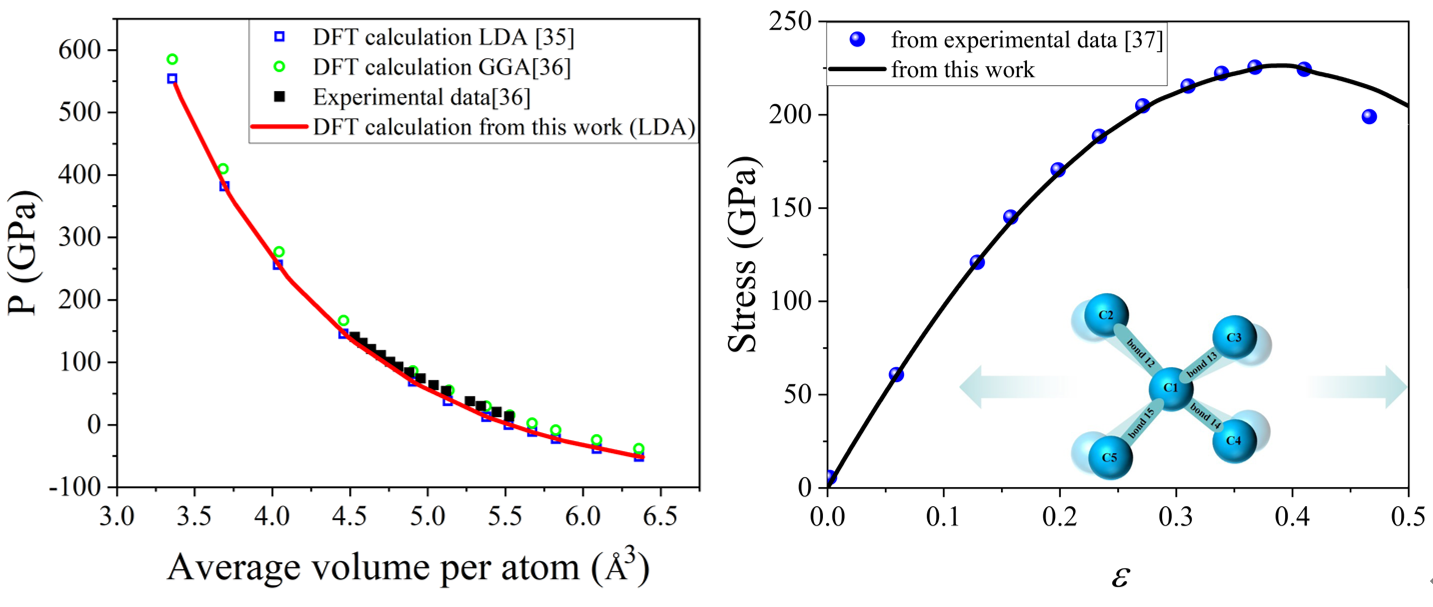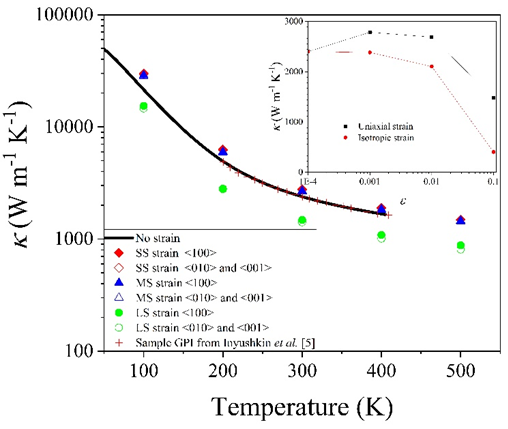Diamond is a crystalline material composed of carbon elements, with extremely high thermal conductivity and sensitive thermal response to stress. This is due to its ultra-high sound speed and weak inverse scattering. With the rapid integration, miniaturization, and performance improvement of electronic components, the power density is also increasing. Embedded cooling is the third generation of thermal management technology, and diamond is an ideal heat sink material in embedded cooling mode. Recently, the Chinese team predicted the stress thermal conductivity dependence of block diamonds using first principles method and discovered an abnormal increase in diamond thermal conductivity under small-scale strain.
Experimental studies show that the highest k value is 2400 W·m-1 K-1 at room temperature. As far as thermal conductivity is concerned, diamond is a natural material for the ceiling. However, is it possible to exceed this thermal conductivity (k) limit ? Strain is an effective tool to adjust the physical properties of diamond. The anomalous physical properties of diamond can be obtained by applying stress to change the lattice of diamond and the distribution of electrons around carbon nuclei. For example, at a high hydrostatic pressure of 400 GPa, the thermal conductivity of diamond is increased by nearly five times. Therefore, further research on the effect of strain engineering on diamond k value has considerable scientific value and engineering guiding significance.
Using the first principles of phonon Boltzmann transport equation, the k value change of diamond along the <100> crystal direction is predicted at three scale strains (0.1%, 1% and 10.5%). Firstly, the stress-strain dependence of diamond and the k value temperature dependence of non-strain diamond are predicted by density functional theory, as shown in Figure 1. The predicted results are in good agreement with the experimental results. The calculated uniaxial strain-thermal conductivity dependence shows that the k value of diamond increases abnormally by about 15% under small-scale uniaxial strain due to the weakening of the interaction between the anharmonic atoms.

Fig.1 Diamond stress-strain dependence
Figure 2 shows the temperature dependence of diamond k value under uniaxial tensile stress at different scales. The application of uniaxial stress did not change the temperature dependence of diamond k value. At high temperatures, phonon-phonon scattering provides most of the thermal resistance. In this state, the increase of temperature increases the heat occupancy of phonons at all frequencies, resulting in an increase in the intrinsic triphonon scattering rate and a decrease in k value. The figure shows the abnormal response under uniaxial strain: k value increases with small scale strain and decreases with large scale strain.The illustration in Figure 2 shows that this phenomenon is not observed under isotropic stretching. This behavior is usually observed in stretched two-dimensional materials, and is generally the result of a synergistic effect of heat capacity, group velocity, and phonon lifetime. However, this thermal response is abnormal for bulk diamond materials where the small scale strain of 0.1% has little effect on phonon dispersion. At room temperature, k can increase by up to 15%. At low temperature of 100K, the reaction is more obvious, kcan be increased by about 36%.

Fig.2 Temperature dependence of diamond thermal conductivity under uniaxial tensile stress
The study predicted the changes in thermal conductivity of bulk diamond under different scales of tensile strain, and found an abnormal increase in thermal conductivity of diamond under small-scale tensile strain and a significant decrease in thermal conductivity under large-scale tensile strain. These findings will guide the analysis of the dependence of thermal conductivity on strain in other diamond like structures. The ultra-high thermal conductivity exhibited by diamond under small-scale tensile strain indicates that local strain can be used to regulate the thermal conductivity of diamond by establishing artificial thermal conductivity channels.
CSMH focuses on the research and production of diamond wafers, and currently has diamond wafer, diamond heat sink , GaN on diamond ,AIN on diamond and other products, providing professional and leading diamond products and solutions for domestic and foreign customers.
 闽ICP备2021005558号-1
闽ICP备2021005558号-1Leave A Message